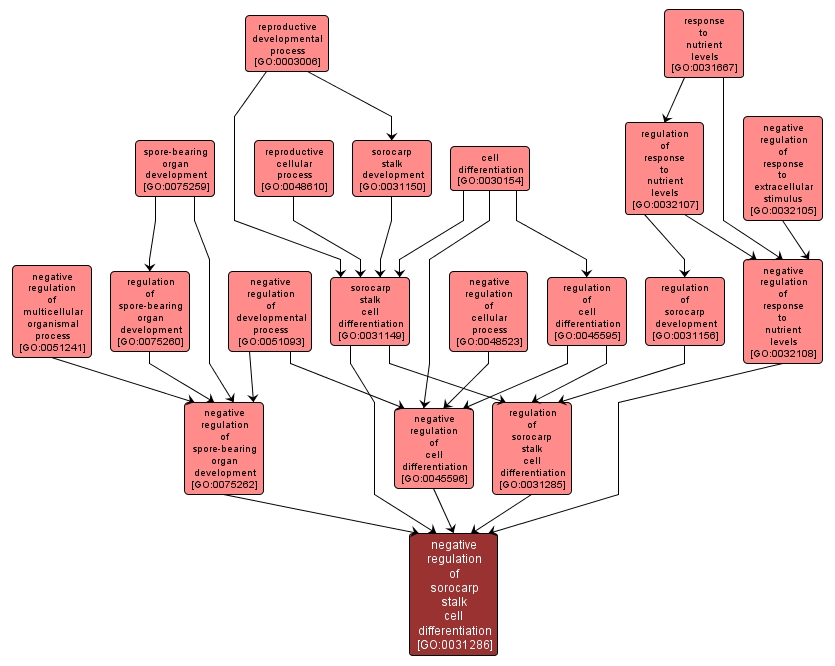GO TERM SUMMARY
|
| Name: |
negative regulation of sorocarp stalk cell differentiation |
| Acc: |
GO:0031286 |
| Aspect: |
Biological Process |
| Desc: |
Any process that stops, prevents or reduces the frequency, rate or extent of sorocarp stalk cell differentiation. An example of this process is found in Dictyostelium discoideum. |
Synonyms:
- inhibition of stalk cell differentiation
- negative regulation of stalk cell differentiation
- down-regulation of stalk cell differentiation
- down regulation of stalk cell differentiation
- downregulation of stalk cell differentiation
|
|

|
INTERACTIVE GO GRAPH
|














